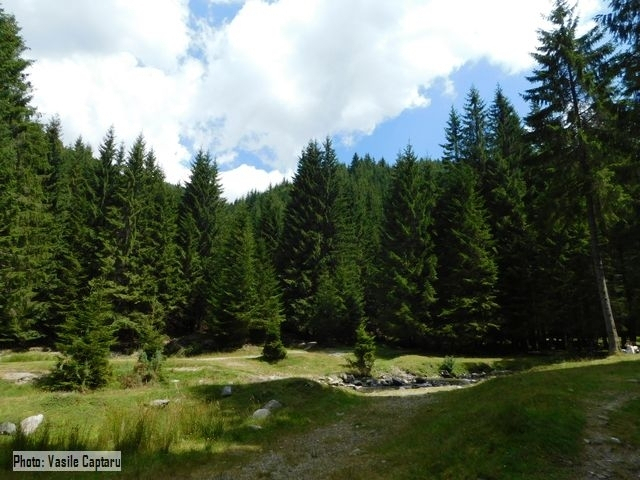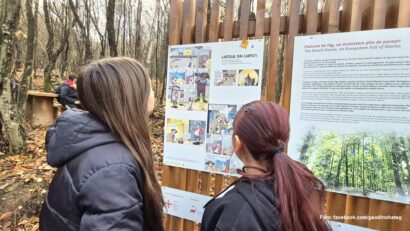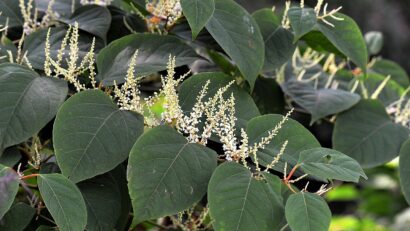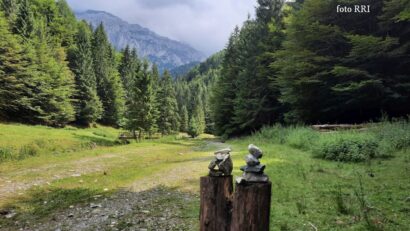Romania’s virgin forests and their fate
WWF Romania and the country's virgin forests

Eugen Coroianu, 24.02.2023, 14:00
The virgin
forests are the last forest ecosystems where nature has survived in its purest
form, without being significantly affected by human intervention. Elsewhere around
Europe, the virgin forests have become almost extinct, yet in Romania, there are
roughly 250 thousand hectares. Since, 2015, the virgin forests have been
protected by the law, as they have been included in the Virgin
and Quasi-virgin Forests Catalogue. In the virgin forest, trees die of old age,
they fall, they break or they wither rather fast, while the deadwood is
left there, feeding the ecosystem for the generations to come. The virgin
forest is home to trees of all ages, from the freshly sprouting seeds to the
trees that have reached their physiological limit, quite like a community:
children, parents and the elderly supporting each other, living a harmonious
and healthy life. Or at least that is what we’ve read in a message posted by
WWF Romania environment organization on its own site.
Under
the crowns of 500-year-old giant trees, living together are over 10, 000 species, ranging from unicellular organisms, mushrooms,
plants, insects, to big mammals, such as the wild boar, the deer, the chamois,
the wolf, the lynx, the brown bear. If the virgin forest disappears, with it, a
thousand-year-old natural evolution cycle disappears too. The virgin forest is a
living lesson preserved in nature’s genuine laboratories, but also part of Romanian
local communities’ cultural identity.
Radu Melu is a national manager of WWF Romania’s
forest division. He spoke about the importance
of the virgin forests.
They are important
in various respects. If we take biodiversity into account, these forests are important
because in them we can find those categories of species that need peace and
quiet, very old trees, large quantities of deadwood, actually all those categories
of species that live better when man does not intervene in the forest. If we
have a large landscape, a very large one, with cultivated forest and a forest
from where wood is extracted, but also some quasi-virgin forest plots where we
did not intervene, allowing nature to have its own evolution, then we can stand
the chance to have the whole biodiversity spectrum in that particular area. So,
it is the biodiversity that contributes something more. These forests come with
something extra when compared to the cultivated forests. In a separate
development, these forests have their evolution, in the absence of no human intervention. In
effect, we see how nature would develop, we have the chance to see how nature
thinks for its further evolution, if you will, considering climate change.
As for climate change, we’ve had something like that before, our planet has faced
these climate changes before and yet, in their wake, nature found its own ways
of survival. For instance, the beech tree has not been a dominant species before
the last glaciation. After the last glaciation, the beech tree has developed
perfectly fine, it has become a dominant species in Europe. It is the solution
nature found for afforestation and for vegetation to regenerate. Well, then,
here we are again, asking questions, but we cannot ask nature in a cultivated forest
or, if the case, with exotic species. We ask nature in such natural forests, in
such forests whose evolution has never been perturbed by man and we find out,
we see what direction it takes and we can also imitate the same thing, in the
cultivated forests.
In order to be protected by the law, Romania’s virgin
forests need to be reintroduced in a dedicated catalogue. Such an undertaking is
in no way simple, yet it is worth the while doing it. The catalogue of the virgin
and the quasi-virgin forests is a project initiated and permanently supported
by WWF. The project is operational and held in high esteem by the international
authorities. Here is Radu Melu once again, this time speaking about
this forestry protection official instrument
The catalogue is in fact a base where all the
forests were included, that have been identified as virgin or quasi-virgin
forests on the territory of our country. In this catalogue, what we have in
fact are those plots and sub-plots, as the forest in Romania is divided in these
basic units known as forest plots, and can be thus identified very easily. They can
be found there. The information is clear, about the forest district, about the area,
the county those plots can be found, and they have been included in the
National catalogue, with their surface area, with all the details, so once a
new arrangement is being done, that is a new planning stipulating where, what and how
much can be cut down, those particular surface areas are avoided. There, logging
is no longer recommended, while the respective surface areas thus remain
protected forever, since the law no longer allows for the planners to come and
decide upon certain works, or on logging operations or any other intervention that
could affect the natural evolution of those forests.
The Environment, Waters and Forests Ministry updates this
catalogue periodically. As we speak, a surface area of more than 71,000 hectares
has been included, of virgin and quasi-virgin forests. The process is ongoing,
yet more involvement is needed, on the part of the interested entities: forests
and protected areas administrators, education or research institutions,
non-governmental organizations.(EN)






























